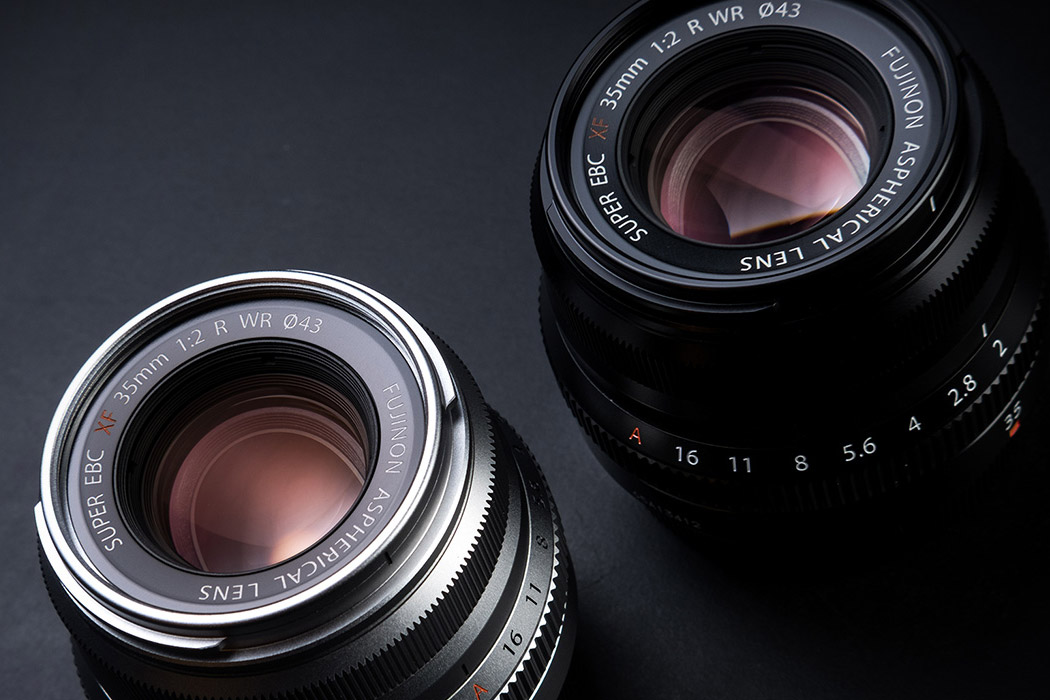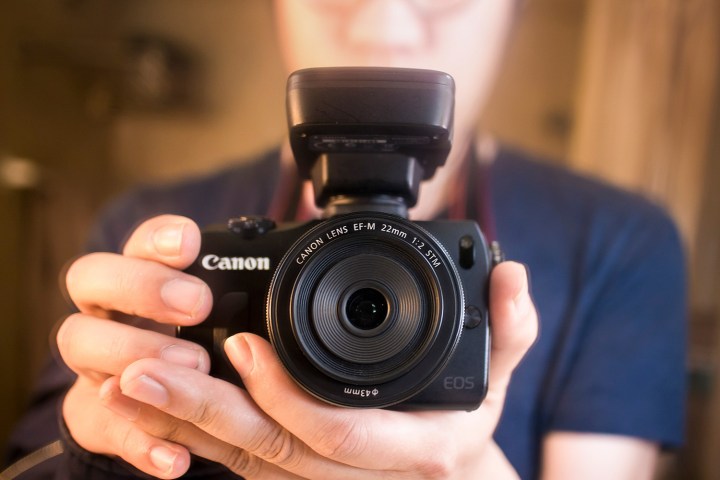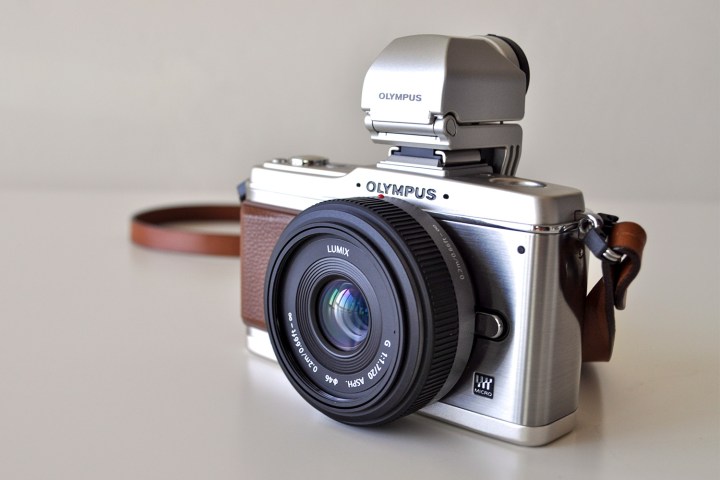
The best lens for you obviously depends on what camera system you use, but the Panasonic Lumix G 20mm f/1.7 is our favorite cheap mirrorless lens thanks to its combination of compact size, fast aperture, and affordable cost. It’s a great benchmark for what to look for in a good, but inexpensive, lens.
The debate will rage on about who makes the best mirrorless camera, but one thing that photographers can agree on is that it’s the lens that matters most to image quality. If you’re not satisfied with the images out of your camera, there’s a good chance the lens is to blame — not the camera itself. Whether you’re in the market for a lens upgrade or are looking at buying your first camera — perhaps one of our favorite mirrorless models — this guide can help narrow down your choices. Here are a few of our favorite mirrorless lenses for various camera systems, all under $500.
At a glance
| Product | Category |
| Panasonic Lumix G 20mm f/1.7 II | Best mirrorless lens overall |
| Sony FE 50mm F1.8 OSS | Best Sony E-Mount lens |
| Fujifilm XF 35mm f/2 R WR | Best Fujifilm XF lens |
| Canon EF-M 22mm f/2 STM | Best Canon EF-M lens |
The best: Panasonic Lumix G 20mm f/1.7 II
Why should you buy this: Ultra-compact, fast aperture.
Who’s it for: Panasonic and Olympus users who want better low light performance without adding weight.
How much will it cost: $268
Why we picked the Panasonic G 20mm f/1.7 II:
The original 20mm f/1.7 “pancake” lens was the first Micro Four Thirds (MFT) lens that successfully drew enthusiast photographers to the platform. Beyond boosting Panasonic’s name in the photography world, it was one of the first lenses to illustrate the potential of mirrorless cameras as tools for serious photographers. For such a small product, it played a pretty big role in the early days of the mirrorless camera segment. The updated mark II version features a metal lens barrel but is optically identical to the original — which is not a bad thing.
The 40mm full-frame equivalent focal length and bright aperture make the Panasonic Lumix G 20mm f/1.7 II a decent lens for casual portraiture, but its real strength is simply the compact design. Weighing just over three ounces and at 1 inch in length, the compact lens is right at home on the smallest MFT camera bodies from Panasonic and Olympus. It’s a take-anywhere lens, great for all types of traveling, but equally useful for snapshots at your next birthday party or backyard barbecue.
The best Sony E-Mount lens under $500: Sony FE 50mm F1.8 OSS

Why should you buy this: Image stabilization, fast aperture
Who’s it for: Portrait photographers and videographers.
How much will it cost: $248
Why we picked the Sony E 50mm f/1.8 OSS:
Sony’s 50mm f/1.8 for its APS-C mirrorless cameras is unique among the “nifty fifty” competition in that it offers Optical Steady Shot (OSS) image stabilization. This isn’t a feature typically found on lenses with such fast apertures, but it’s a fantastic addition for video shooters and users of Sony cameras without in-body stabilization, like the A6300.
With a 75mm full-frame equivalent focal length and bright, f/1.8 aperture, this lens is ideal for portraiture. Achieving a shallow depth of field is easy if desired, and the bright maximum aperture also makes this a good lens for low-light work, letting in significantly more light than any kit lens.
As the Sony E 50mm is designed for APS-C sensors only, it won’t work on Sony’s full-frame A7-series cameras. However, full-frame shooters do have an affordable option in the FE 50mm f/1.8. It doesn’t have OSS, but at just $248, it’s even more affordable, despite being full-frame compatible.
The best Fujifilm XF lens under $500: Fujifilm XF 35mm f/2 R WR

Why should you buy this: Weatherproof, compact.
Who’s it for: Travel and street photographers
How much will it cost: $399
Why we picked the Fujifilm XF 35mm f/2 R WR:
Fujifilm knows its stuff when it comes to prime lenses, and most every model it puts out is squarely aimed at enthusiasts or professionals. The company’s older and larger 35mm f/1.4 is an excellent lens, but at $599, it doesn’t make the cut here. Fortunately, the newer 35mm f/2 sheds some weight — and $200.
Although it gives up one stop of light gathering capability, the f/2 aperture is still decently bright and suitable for low light shooting. Plus, even though it is both cheaper and more compact, it gains the WR designation, meaning it is weather resistant — something the f/1.4 version lacks. This is great news for shooters of Fujifilm’s high-end cameras like the X-Pro2, X-T2, and X-H1, all of which are weather sealed. It’s low-profile design makes it especially well suited for the rangefinder styling of the X-Pro2.
If the Fujifilm XF 35mm’s focal length isn’t quite right for you, don’t fret: Fujifilm also makes a 50mm and a 23mm lens in its f/2 series. Each sells for $449, slightly above the 35mm, but either could have easily held this spot on this list.
The best Canon EF-M lens under $500: Canon EF-M 22mm f/2 STM

Why should you buy this: Compact design, fast aperture
Who’s it for: EOS M shooters who want better low-light performance and portability.
How much will it cost: $229
Why we picked the Canon EF-M 22mm f/2 STM:
Canon’s EOS M mirrorless system may be a few years old, but its native lens collection definitely still looks to be in its infancy. With just seven models to choose from, there is one gem among the otherwise average offerings: the compact, affordable, and sharp 22mm f/2 STM.
Like the Panasonic 20mm f/1.7, Canon’s 22mm is a pancake lens, measuring less than one inch in length and weighing just 3.7 ounces. It’s also the only EF-M lens with a maximum aperture larger than f/3.5, making it the only real option for EOS M users looking for a native lens that’s good in low light.
With a full-frame equivalent focal length of roughly 35mm, the Canon EF-M 22mm f/2 STM is a great choice for street photography, casual snapshots, and small group portraits. The STM stepper motor, a feature standard on all Canon EF-M lenses, also makes the 22mm f/2 a good video lens thanks to fast, smooth, and nearly silent focusing. For better or worse, this is the closest Canon has to a true enthusiast photographer’s lens for the EOS M system.
How we chose these lenses
In selecting the above lenses, we looked for features that would provide a noticeable difference in image quality, design, and usability over basic kit lenses — all while not breaking the bank. The lenses themselves have not been individually reviewed by Digital Trends, but our writers have used them as part of camera reviews or in other capacities. In addition to our own experience, we selected lenses that drew overly positive feedback from the general public based on customer reviews.
General buying advice
There’s a hard lesson to learn when it comes to shopping for lenses: you can’t have it all. You may have noticed all of the above options are prime lenses, meaning they do not zoom. Prime lenses make it possible to get sharp optics, bright apertures, and compact designs while keeping costs under control. If you want similar features in a zoom, you’ll typically be paying much more. There are zoom lenses available for under $500, but most act as extensions of kit lenses and have similarly slow apertures and average optical performance. While such lenses open up new focal lengths, few bring true image quality gains.




